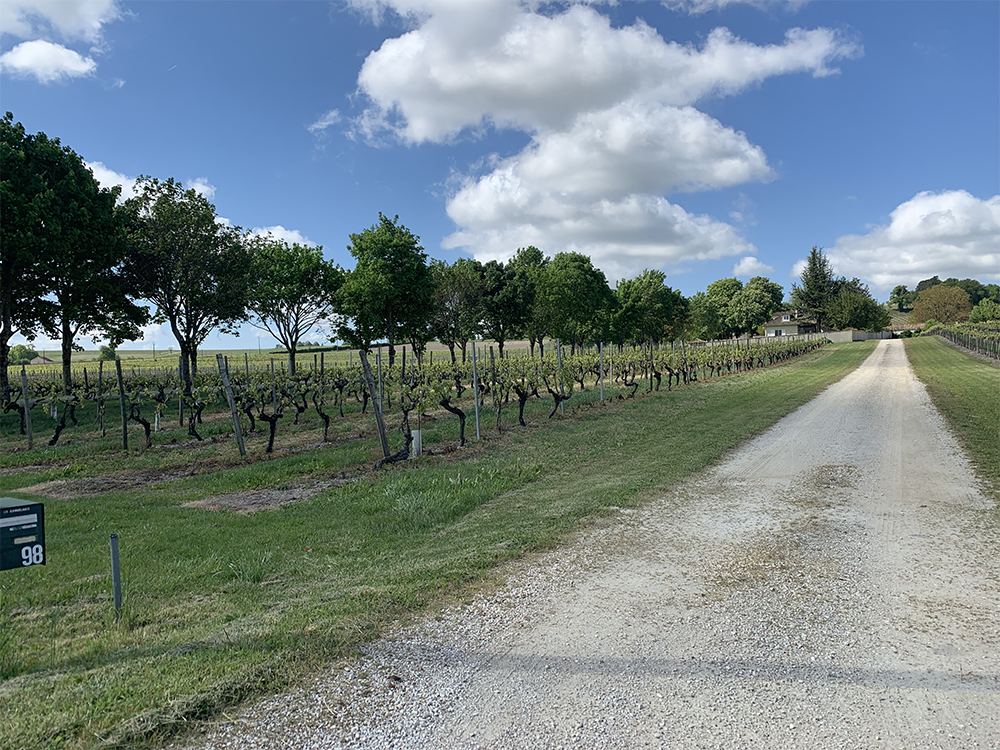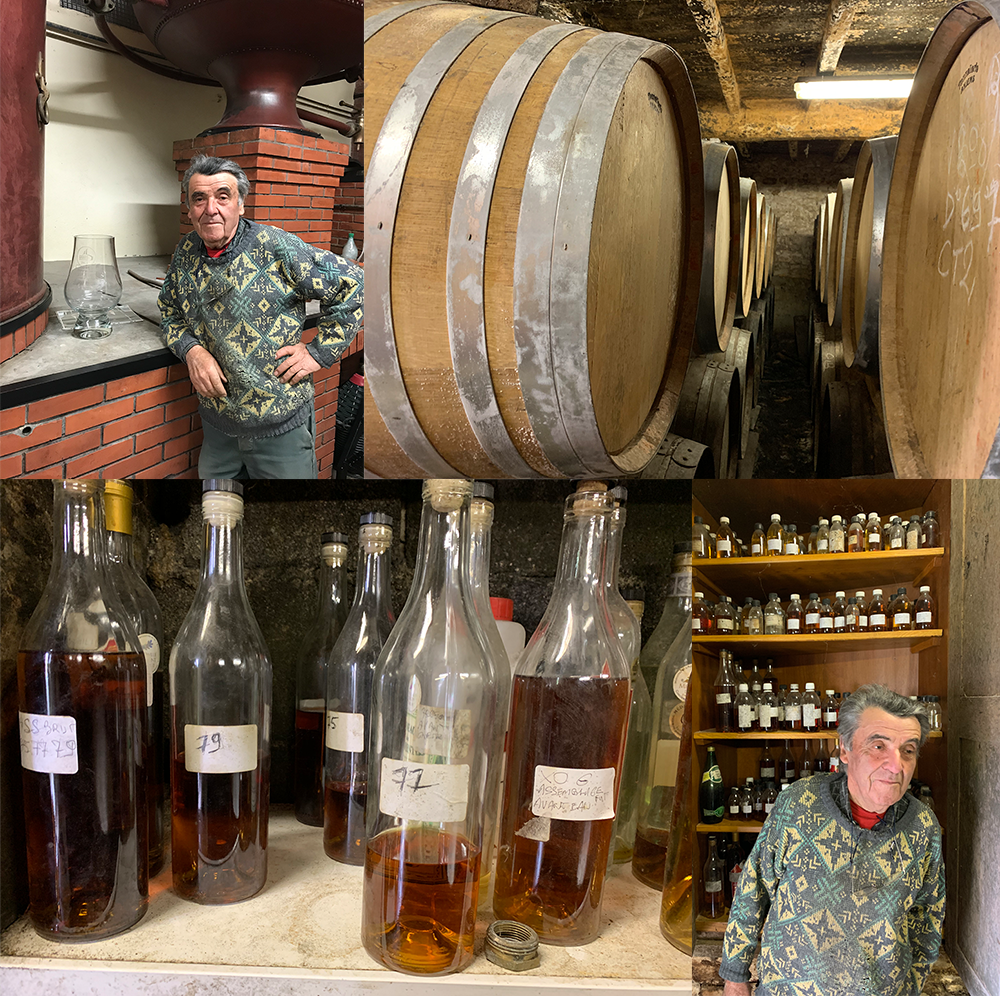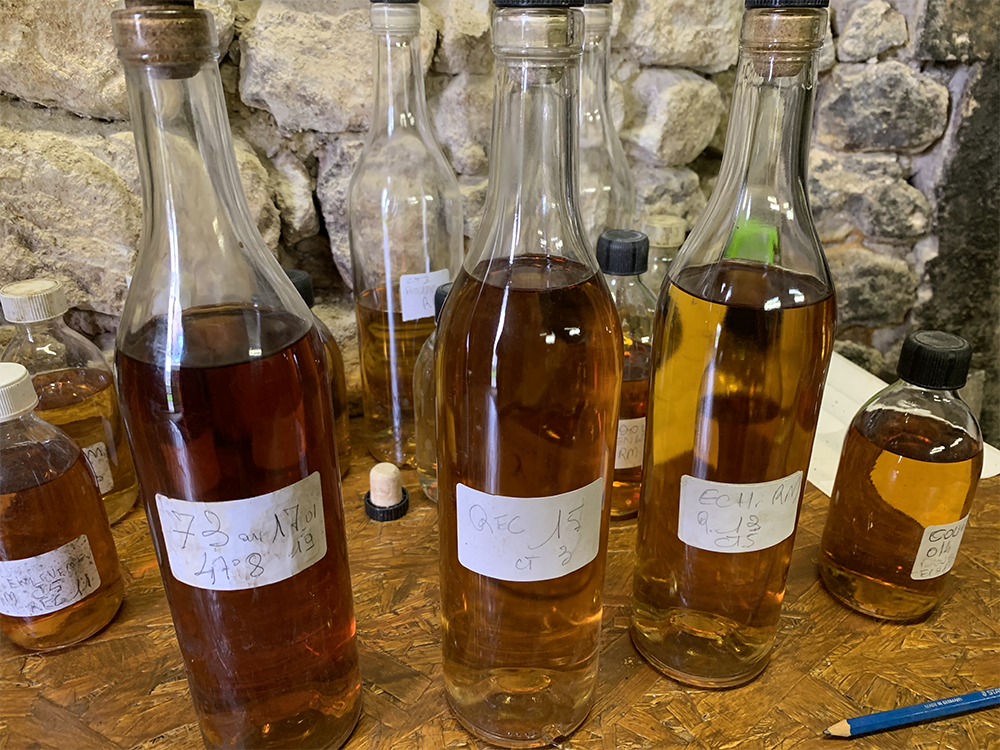A visit to the Cognac region in France promises… well, lots of cognac. The tried and true approach is to go behind the scenes and tour one of the cognac houses, or maisons de Cognac. Most of the big houses are centered in the Charente region of France; naturally enough, many are in the town of Cognac proper. Hennesey. Martell. Remy Martin. Camus. Courvoisier is in nearby Jarnac. All start with the same basic ingredient: the colorless, tasteless alcohol — eau de vie —that is distilled from Champagne grapes.

Many years ago, I visited the Hennesey cognac house. I remember the impressive stacks of product. The French oak barrels, the gentle aging process, the “angel’s share.” It was worth another round.
La part des anges is the portion of cognac that evaporates during the maturation process, leaving a distinctive aroma and staining the limestone walls black with spores that thrive on this essense.
As luck would have it, Lorrie booked us into a small B&B (“gite”) in Celles, just outside Cognac. Our host, June Smallwood, happened to know a local cognac distiller. Michel Drouet is a third generation cognac master, with vineyards bordering the B&B. “Yes,” June confirmed, “we can visit him today.”

The visit was an education. An intense education. Using a combination of French, English and Spanish — it’s common for European conversations to span multiple languages — June and Michel took us behind the scenes in Cognac. Or, more accurately, deep behind the scenes.
Lesson #1: The big cognac houses are not distillers, they’re blenders who buy distilled and aged eau de vie from small houses like Michel’s. The small distillers are on four year contracts with the big houses; they do the initial distilling and aging. After four years, they deliver their product to the big houses.
Lesson #2: Job number one for the big cognac houses is consistency within their “brand” identity. Consistent sugar. Consistent color. Consistent taste. If the color is not “consistent,” they add caramel coloring. If the taste is not consistent, they’ll add sugar.
Lesson #3: The big houses are under no obligation to buy the eau de vie after the four year contract matures. Michel has Courvoisier inspect his barrels every six months. If they won’t take them, he wants to know early. He can make his own damn cognac.
Lesson #4: Michel is a gold-medal cognac distiller and blender. Like all producers, his cognac is double-distilled, as it must be. He has his own aging room. It is black with the “angel’s share.”

Lesson #5: The small houses make some incredible cognac. XO cognac, which must be aged at least ten years? Yep, Michel’s got it. Cognac that’s 35 years old? Yep, he’s got that too. It’s everything the big houses promise except… Artificial consistency and high prices. Michel’s cognac goes for one-third the price of the big houses. It tastes every bit as big and distinctive. And is, perhaps, more authentic.

Lesson #6: The locals don’t buy cognac from the big houses. They buy from small producers like Michel. So did we. This is la France profonde. It doesn’t get any better than that.
Want to experience deep cognac for yourself? Start by booking at Logis de L’Arceau. Your host, June Smallwood, can make arrangements.